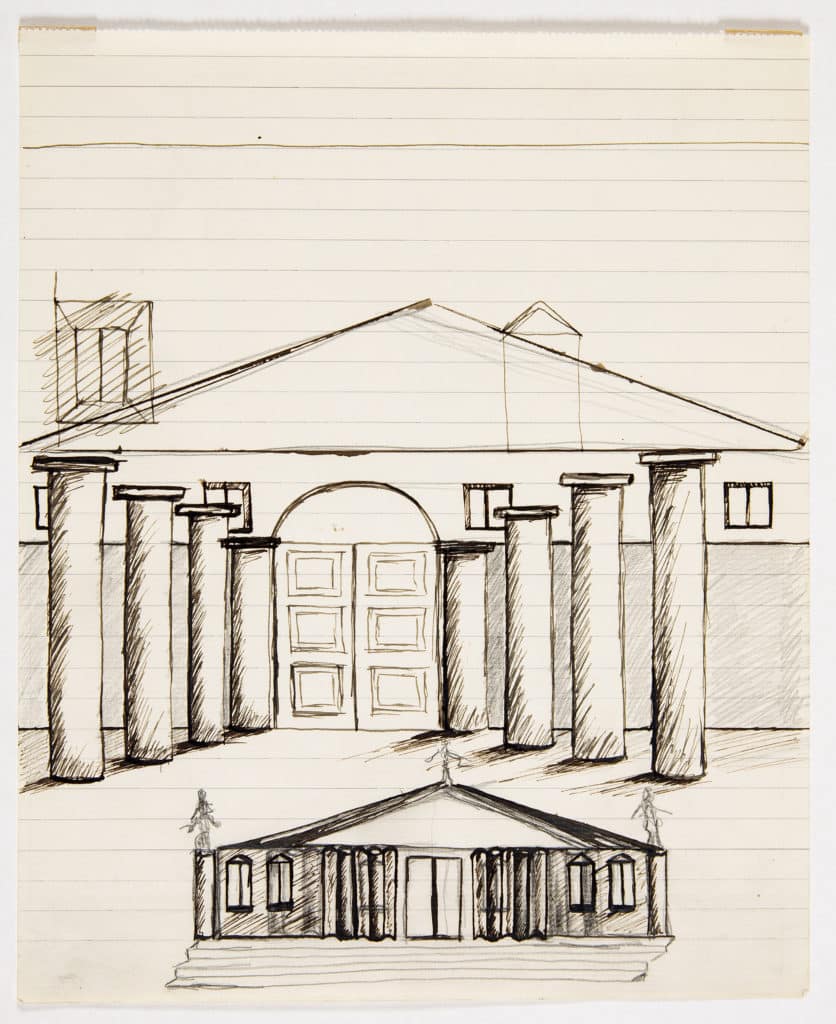Salvador Dalí

There is evidence that Salvador Dalí’s enigmatic study for a building facade is part of a real project, but we don’t know what that might be. The sketch resists interpretation and association, far different from anything else Dalí produced at the time: 1939 – a year in which he has an exhibition at the Julien Levy Gallery, creates windows for Bonwitt Teller, enters the Universal Exposition in New York, produces sets for the Bacchanale Ballet at the Metropolitan, flees Paris as Germany declares war on France, sees the civil war end in Spain, with Franco victorious, and publishes ‘Declaration of the Independence of the Imagination and the Rights of Many to his own Madness’, against the Universal Exposition’s directive committee.
Could it then be imaginary, the real as the product of an irrational state, though a long way from Dalí’s surrealist work? While at first appearing normative – as a colonnade and study for façade – upon closer inspection it begins to resemble a stage set. For a seemingly centralised space with four columns and a pediment can be few things besides. Yet only the foremost columns on either side seem to support the pediment and from a distance, the columns seem both to recede and emerge, freed from their supporting role. A processional space is implied, though the perspective is slightly askew, as though one has entered from the left. The lighting and shadow too seem incongruous, suggesting a source simultaneously to the right and behind. The sketch below is equally unresolved and enigmatic, with its pencil statuary on the pediment, which nevertheless adds richness and ambiguity to the drawing.
Can one perceive a link here between Dalí’s drawing, Rousseau’s Colonne Nationale, Rossi’s Urban Fragment, Price’s Battersea, Peter Märkli’s Untitled and the Hogarth – all works that share this drawer in the exhibition In/Out? As one’s gaze drifts from drawing to drawing, such juxtapositions evoke phantom images that might be the result of an unconscious act, a perception between things that are both rationally linked and not linked – ‘a spontaneous method of irrational knowledge based on the critical and systematic objectivity of the associations and interpretations of delirious phenomena’ – and the ‘real’ world from which they arise loses its validity. The mad logic of Dalí’s method leads to a world seen in continuous flux, as in his paintings of the 1930s, in which objects dissolve from one state into another, solid things become transparent, and things of no substance assume form.

– Javier Contreras